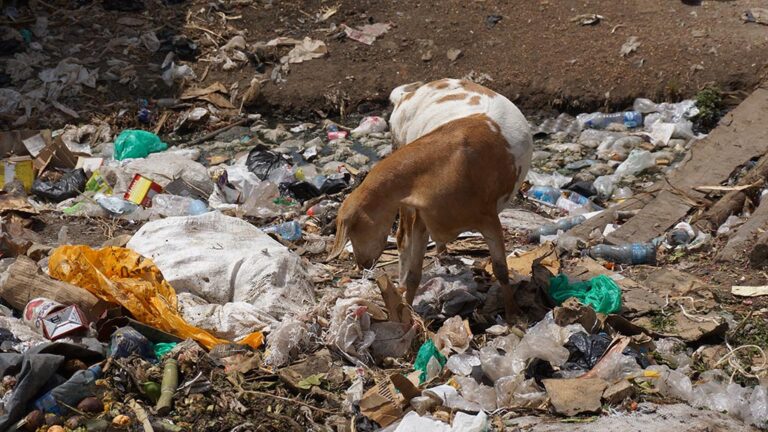Countries such as Japan and the United States sell large quantities of plastic waste to low- and middle-income countries. In Kenya, this has led to livestock getting plastic, blocking sewers and ending up with plastic waste in rivers and seas. A new UN agreement - which classifies plastic as hazardous waste - can now put an end to the export of plastic waste.
Plastic waste is often sent to low- and middle-income countries for "recycling" - although many of these countries do not have the capacity or technology to deal with this type of waste, let alone recycle it. Some examples of countries that have had problems with imported plastic waste are Kenya, Laos, Ethiopia and Cambodia. There, the plastic waste has become unmanageable and created major problems.
In Kenya, plastic waste has ended up in the wild where livestock eat it. The waste also ends up in rivers and seas, or blocks sewers, which can lead to flooding and the spread of diseases. In an attempt to reduce plastic waste it burns up, leading to emissions of toxic gases and vapors harmful to plants, animals and humans.

Plastic waste has so far been handled as a market commodity and high-income countries have been able to sell their plastic waste to players in low- and middle-income countries. After a negotiation within the UN Over 180 countries have now classified plastic as hazardous waste. The agreement was concluded on 10 May 2019 and the new rules will not enter into force until six months later.
It is still unclear exactly what effects the agreement will have, but as plastic waste is now classified as hazardous waste, it will mean stricter controls. Among other things, countries that want to sell their plastic waste to another country must first get it an approval from the government of the importing country. This leads to a higher degree of control compared to before. In the past, private actors in low- and middle-income countries could accept large deliveries of plastic waste without the government's knowledge.
China's import bans affect other countries
In January 2018, China decided to stop buying plastic waste from other countries. Until then, the country was the world's by far the largest importer and received around half of the world's plastic waste. After China stopped, some high-income countries have instead started selling their plastic waste to Malaysia and Vietnam, where the influx of plastic has quickly had devastating consequences.
Several countries in Southeast Asia, such as Thailand, Malaysia and India, are now following in China's footsteps and stopping imports of plastic waste. This poses problems for those countries that have previously exported their plastic waste and lack the infrastructure required for its management. In countries such as Japan and the United States plastic waste is placed on landfills because their current waste system cannot handle the amount of plastic waste.
The production of plastic products expected to double over the next 20 years, mainly as a result of increased sales in low- and middle-income countries. Even though imports of plastic waste have fallen sharply, the challenge of tackling the waste from the products still sold in countries that do not have waste management infrastructure remains.

